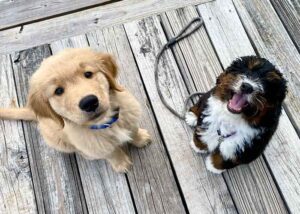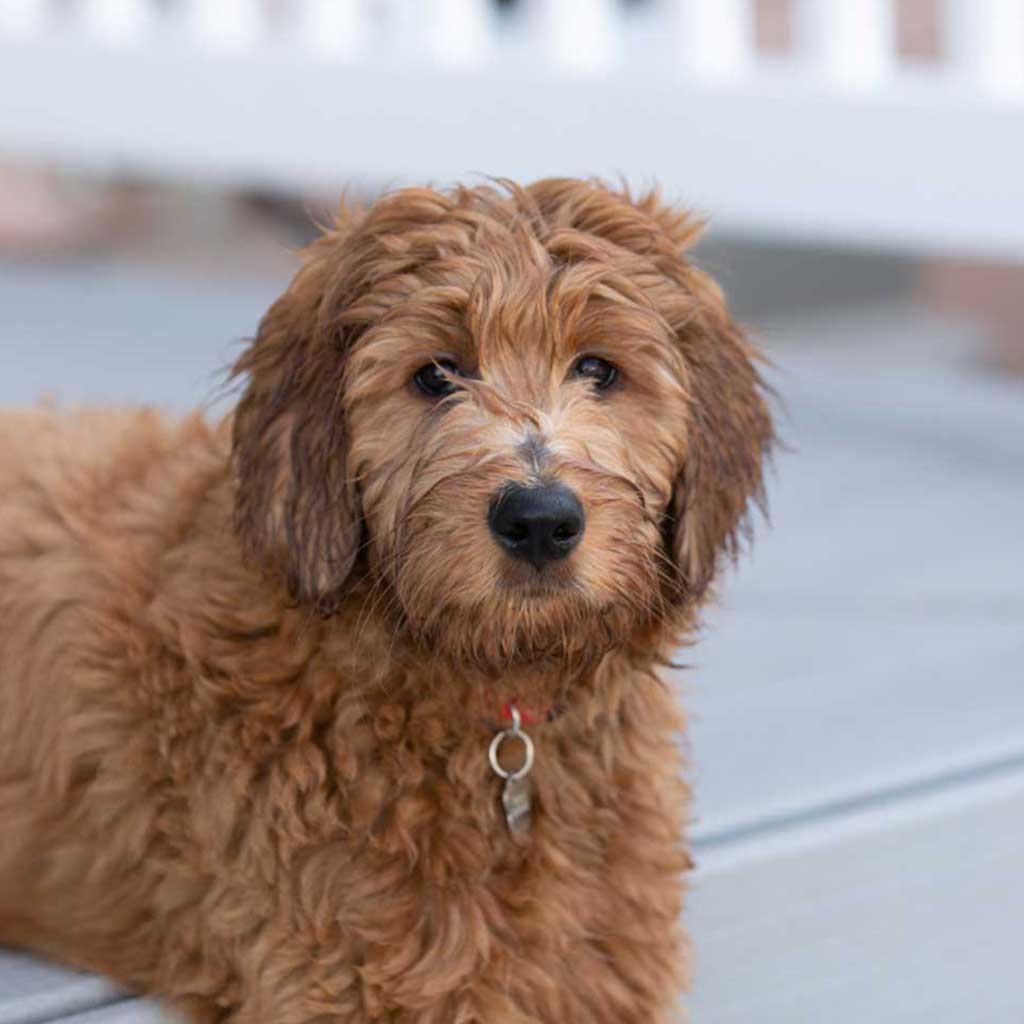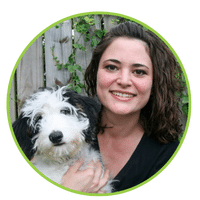People commonly use the terms shy, timid, and nervous to describe fearful puppies.
Many think puppies are a “blank slate,” and their personalities are solely based on their upbringing. Nurture indeed has a significant impact on a puppy’s behavioral development. However, genetics also play a huge role in a puppy’s overall temperament and ability to handle stressors. I’ve met plenty of fearful/reactive dogs from an excellent breeder who grew up with a great family. I’ve also met many outgoing, friendly dogs who grew up in terrible situations.
The good news is that it is possible to recognize fearful tendencies in puppies and intervene early to reduce the chance that they grow up to become nervous or defensive adults. By noticing these traits early (even as early as eight weeks of age), we can help teach the puppy coping skills and help introduce them to the world at their own pace. Unfortunately, they don’t tend to “grow out of it” on their own, and it’s possible to make it worse by overwhelming them.
Signs that your puppy may be fearful
• When seeing new people or animals, your puppy avoids them or barks defensively.
• He startles easily indoors or outdoors.
• She hides or avoids staff at the vet clinic or other social situations.
• Your puppy often displays fearful body language in multiple situations in and out of your home.
These signals include the tucked tail, ears back, lip licking, constantly scanning the environment, lowering their body, or trying to escape/avoid.
I highly recommend contacting us for a consultation if you recognize the traits above. We can help you help your puppy become the best dog it can be!
We discuss tips to help puppy shyness in our other blog, “Problems with Puppy Socialization,” which you can read in brief below.

How to Help Shy Puppies
The narrative is so strong that you may even feel like a crappy dog parent if your dog doesn’t have dog friends! After all, how could you deprive your dog of “socialization”?!
So how do we avoid accidentally creating these problems but still socialize our dogs?
Avoid letting your pup interact with every dog or person that crosses their path. They don’t have to touch every person or dog physically, but they still benefit from the exposure to seeing other people and dogs.
Build your relationship with your dog through fun play sessions and training. I love using a tug-and-forget game to keep a dog engaged with me. Play also helps nervous dogs gain confidence. If your dog thinks you’re fun, he’ll be more likely to pay attention to you in public or while walking.
Teach your dog what a clicker means by clicking and then giving a treat. Once your dog understands that the click means a treat is coming, you are ready to start using it on walks.
When out walking with your pup or dog, watch his body language and click as soon as you see him notice a dog, person, squirrel, or whatever. Then, quickly deliver a treat to him. Be sure to click before he pulls or vocalizes. Move away from the oncoming distraction to prevent your dog from barking. After some practice, you’ll notice that your dog looks at a distraction but then turns back to check in with you. This is what you want! This behavior creates a dog that can walk through a busy park without making a scene!
Other passive socialization ideas include:
Take your dog on a car ride and park it in a busy store or animal hospital parking lot for about 5 minutes. Then, stay in the car and click and treat your dog for watching people walk by the vehicle.
Find a low-traffic park and sit on a bench. Place a mat next to you and have your dog lie on the mat. For calm behavior, drop treats down to them. When a person or dog walks by, give your dog treats quickly to keep them down and relaxed. Just make sure you don’t allow someone to step up to your dog in this situation.
Sit in your front yard or driveway and click and reward your dog for watching people walk by.
The main idea here is to expose your dog to new places and things but reward them for checking in with you and being calm. Just click and treat! Do not allow them to pull you over to something they’re excited about, and if they are afraid, don’t force them to interact.
This will help you create a polite dog that can pass by another dog without overexcitement or fear.
Once this behavior pattern is ingrained, you may consider teaching your confident dog to say hello on cue. But that’s a topic for a different day!
Puppy Trainer Vero Beach, Florida
Check out some of Gerry-Anna’s amazing reviews.
Book your FREE consultation today for expert puppy training advice and find out how Gerry-Anna can help you and your puppy live stress-free.

